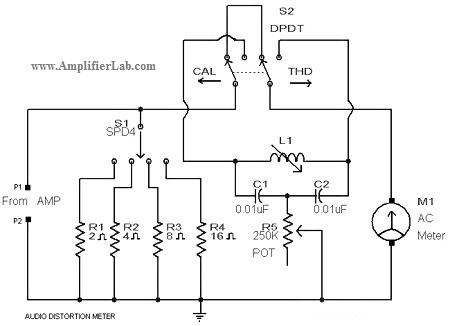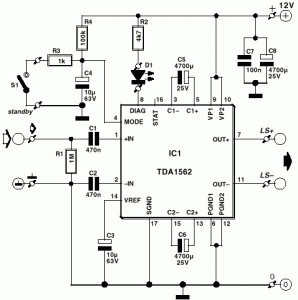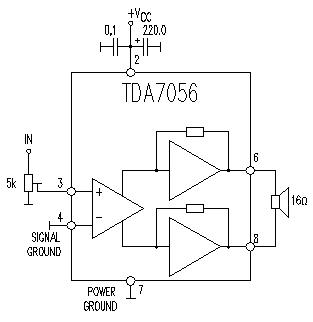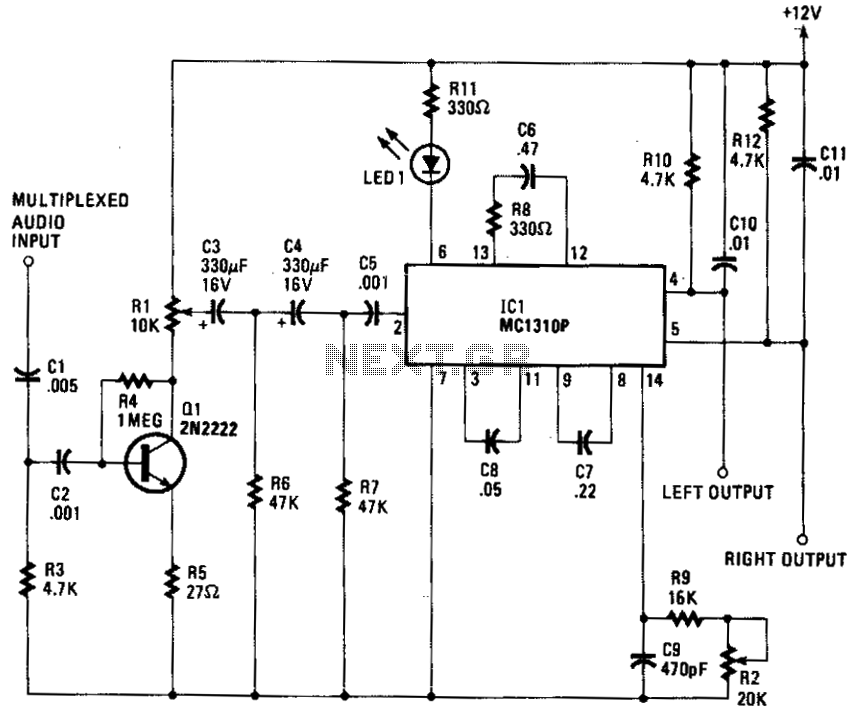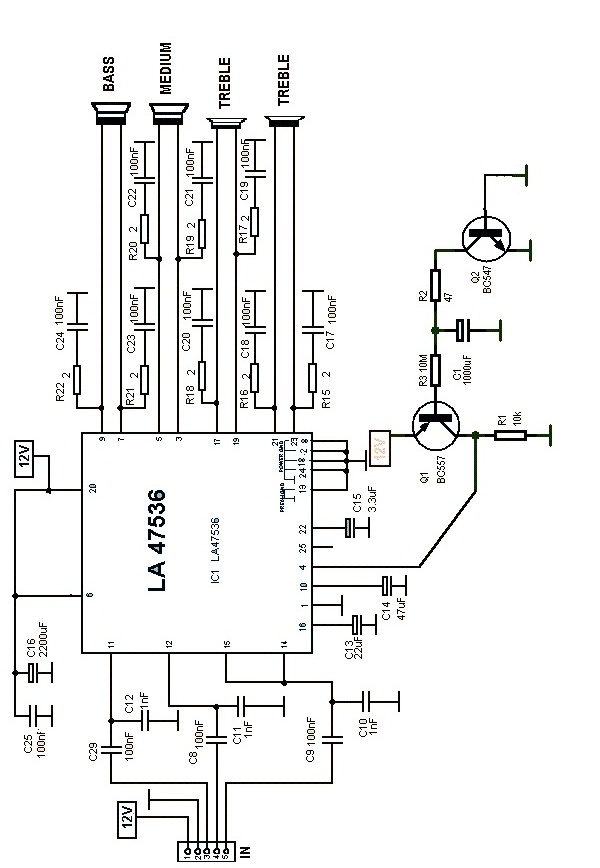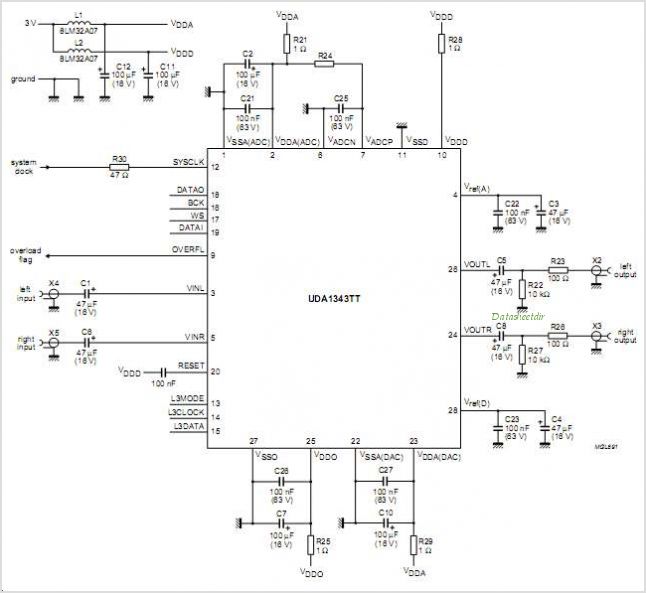
Audio stereo Panner
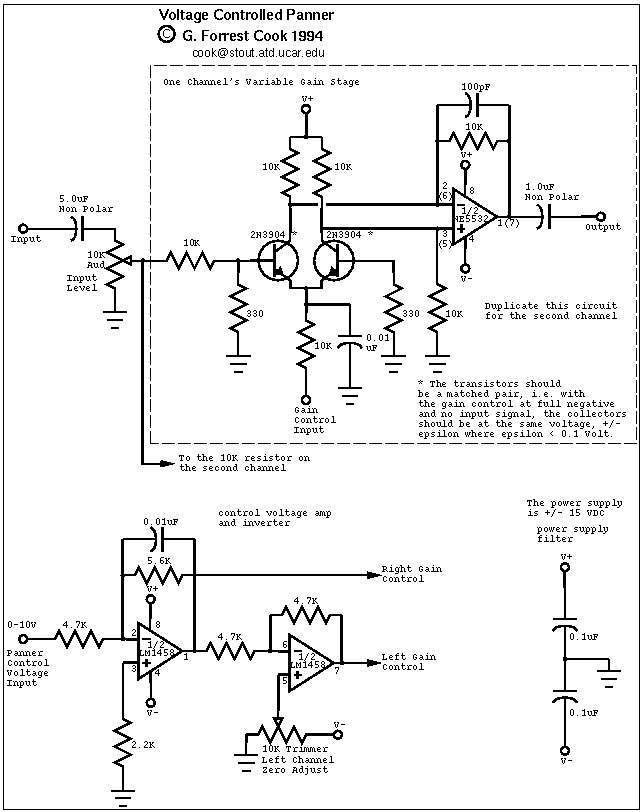
This circuit is used to convert a mono audio signal into a stereo signal that can be panned between the left and right channel by a 0-10V control signal, it is intended for analog synthesizer systems.
The circuit design focuses on transforming a single mono audio input into a dual output that simulates stereo sound. This is achieved through the use of a variable gain amplifier (VGA) configuration, which allows for dynamic adjustment of the audio signal levels based on an external control voltage ranging from 0 to 10 volts.
The core of the circuit consists of two operational amplifiers (op-amps) configured as summing amplifiers. The mono audio signal is fed into both op-amps, while the control voltage determines the gain applied to each channel. A potentiometer can be included in the circuit to facilitate manual adjustment of the stereo panning effect, allowing users to blend the audio signal between the left and right outputs seamlessly.
The control voltage can be generated from an analog synthesizer’s modulation sources, such as an LFO or an envelope generator, providing versatility in sound design. By adjusting the control voltage, the circuit can create various spatial effects, enhancing the listening experience.
Additionally, the circuit may include passive components such as resistors and capacitors to filter unwanted noise and stabilize the output signals. Proper grounding and shielding techniques are essential to minimize interference, ensuring high-quality audio output.
The final outputs can be connected to standard audio interfaces or mixers, making the circuit suitable for live performances or studio applications. Overall, this mono-to-stereo conversion circuit is a valuable tool for musicians and sound designers looking to expand their sonic capabilities within analog synthesizer systems.This circuit is used to convert a mono audio signal into a stereo signal that can be panned between the left and right channel by a 0-10V control signal, it is intended for analog synthesizer systems. 🔗 External reference
The circuit design focuses on transforming a single mono audio input into a dual output that simulates stereo sound. This is achieved through the use of a variable gain amplifier (VGA) configuration, which allows for dynamic adjustment of the audio signal levels based on an external control voltage ranging from 0 to 10 volts.
The core of the circuit consists of two operational amplifiers (op-amps) configured as summing amplifiers. The mono audio signal is fed into both op-amps, while the control voltage determines the gain applied to each channel. A potentiometer can be included in the circuit to facilitate manual adjustment of the stereo panning effect, allowing users to blend the audio signal between the left and right outputs seamlessly.
The control voltage can be generated from an analog synthesizer’s modulation sources, such as an LFO or an envelope generator, providing versatility in sound design. By adjusting the control voltage, the circuit can create various spatial effects, enhancing the listening experience.
Additionally, the circuit may include passive components such as resistors and capacitors to filter unwanted noise and stabilize the output signals. Proper grounding and shielding techniques are essential to minimize interference, ensuring high-quality audio output.
The final outputs can be connected to standard audio interfaces or mixers, making the circuit suitable for live performances or studio applications. Overall, this mono-to-stereo conversion circuit is a valuable tool for musicians and sound designers looking to expand their sonic capabilities within analog synthesizer systems.This circuit is used to convert a mono audio signal into a stereo signal that can be panned between the left and right channel by a 0-10V control signal, it is intended for analog synthesizer systems. 🔗 External reference
